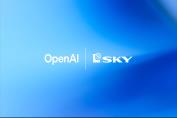
Nokia and Rohde & Schwarz Launch AI-Powered 6G Receiver to Extend Coverage and Cut Deployment Costs
- 05 November, 2025
AI-powered 6G receiver: What Nokia and Rohde & Schwarz announced
I've been watching 6G research closely for a few years now, and this one felt different the moment I read the test notes. Nokia Bell Labs and Rohde & Schwarz teamed up to build an AI-powered 6G radio receiver that uses machine learning to compensate for the kinds of signal problems that haunt millimeter-wave and terahertz bands. The payoff? In real-world validation they reported uplink distance gains in the neighborhood of 10%–25% versus today’s receiver implementations — not a tiny lab curiosity, but a tangible improvement that can shave rollout cost and speed up operator deployments.
How the AI receiver improves coverage and efficiency
What they did, in plain terms, was put inference where it matters: at the receiver. The AI model learns to identify distortion, non-linearities, and propagation quirks and then undoes them in near real time. The practical effects are the sort of things network planners dream about. Users keep a usable uplink at longer ranges — which matters massively at higher frequencies — and because the receiver is cleaning up signals you see fewer retransmits and lower power used across the link. The cleaned-up waveform also translates into higher effective throughput; the radio hears more of what the transmitter is actually saying.
Test setup and validation — the real-world details
They didn’t just throw numbers out of a simulator. Rohde & Schwarz test equipment featured heavily: an R&S SMW200A was used to generate uplink waveforms and emulate channels, while the FSWX analyzer handled the receiver-side inference tasks that let Nokia’s algorithms cancel distortion and interference. From my time running wireless testbeds, that pairing buys you repeatability without losing the messy, real-world behavior you need to trust a result. The headline — 10%–25% uplink gains — came from scenarios modeled on urban and suburban deployments, not just pristine line-of-sight cases.
Why this matters for operators and network planners
Higher-frequency 6G bands are tempting because of the capacity they promise, but propagation is the constant tax. This receiver changes the math in three practical ways that actually affect rollout plans. First, operators could stretch 6G functionality over portions of existing 5G footprints instead of blanketing neighborhoods with new sites. Second, fewer sites and lower per-link power use directly reduce both CAPEX and OPEX. Third, if coverage is partly solved in the silicon/firmware at the receiver, pilots move to commercial scale faster — less site fiddling, more software tweaks.
Proof-of-concept demonstration
They staged a public demo at the Brooklyn 6G Summit (November 5–7, 2025) to show the concept running under realistic channel conditions. Seeing it live matters: bench results are one thing, but a demo that reproduces those uplink and power-efficiency gains under practical constraints is the kind of proof that gets product teams and operators’ procurement people talking seriously.
Potential use cases and industry impact
Don’t limit your imagination to phones. This uplink improvement nudges several segments hard enough to matter. Fixed wireless access becomes cheaper to deploy because a single site covers a larger footprint. Industrial IoT gets more reliable uplinks across factory floors and outdoor yards, which is huge for control loops and timely telemetry. And AR/VR — the immersive, mobile experiences — benefit from steadier uplink throughput and lower retransmits, which eases latency budgets. I can almost see a rural operator running the numbers: cover the same subscriber map with roughly 15% fewer sites in a midband-to-mmWave mix. That’s a clean CAPEX avoidance story.
Technical challenges and next steps
But — and this is important — embedding AI at the receiver isn’t free. Edge inference must run with tiny latency, be extremely power-aware, and stay stable across wildly different channel states. The tests are promising, yes, but product teams will need to: push latency and power further down, broaden support across antenna arrays and deployment topologies, and do heavy interoperability work with chipset and radio vendors. In short: promising prototype, significant engineering left to do.
Why this announcement is a good sign for 6G adoption
What struck me was how this collaboration doesn’t treat AI as an afterthought. It’s not a bolt-on analytics experiment — it’s a functional enhancement in the receive chain. Cross-company testbeds like this one are often the precursor to broader ecosystem moves because they validate both the algorithmic approach and the measurement methodology together. So yes: an encouraging sign. Skeptical? I am, a little — real networks are messy — but this is the sort of pragmatic engineering that actually changes deployment economics.
Key takeaways
Here are the bits you’ll probably care about if you’re planning networks or building radios: the AI-enabled receiver claims 10%–25% uplink range improvements; that translates into fewer base stations and lower power bills in many rollout scenarios; the validation used R&S SMW200A and FSWX equipment; and the proof-of-concept was shown at the Brooklyn 6G Summit (Nov 5–7, 2025). Small headline: an incremental radio improvement. Bigger headline: a material reduction in deployment friction for 6G.
For more context, look to recent literature from the IEEE Communications Society for the broader research trends, and Rohde & Schwarz product briefs for the specific test gear used. The announcement is one piece in a larger puzzle: AI + RF is becoming a practical lever for networks, not just an academic toy. It’s a small step for the receiver — but potentially a big one for getting 6G out of the lab and into live networks.
Learn more in our guide to AI efficiency and how infrastructure changes affect AI deployments.







